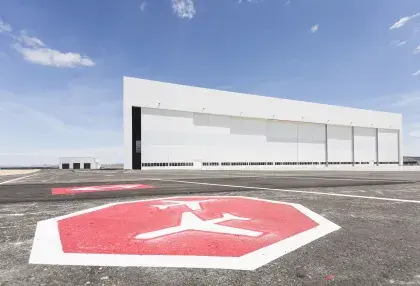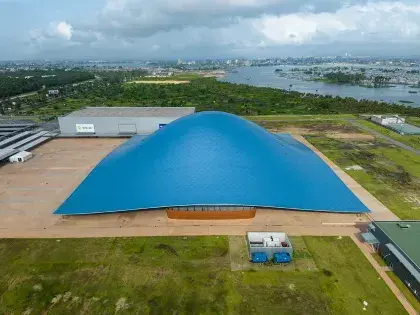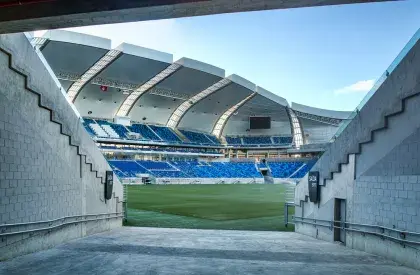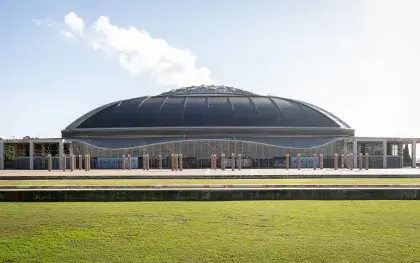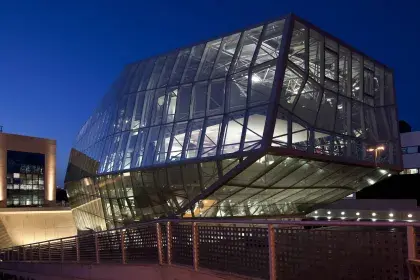SEO System

EL EDÉN SHOPPING CENTER
The SEO structural system for the construction of space frames consists of bars and nodes, connected to each other using bolts.
The SEO structural system for the construction of space frames consists of bars and nodes, connected to each other using bolts.
The node is made of a forged one-piece sphere with a number of threaded holes, which depends on the geometry and position of the sphere in the structure. The number of holes is only limited by the minimum angle required to prevent interference between two adjacent bars.
The bars are made of structural steel. At their ends, they have two truncated conical elements welded on, which house specially designed bolts.
These bolts have a dual structure: a hexagonal section and a threaded section. A spacer sleeve is placed over the hexagonal section to determine the distance between the sphere and the bar. The threaded part is inserted into the sphere. The connection between the bar and the sphere is achieved by tightening the spacer sleeve with a wrench.
This procedure ensures the required joint tightening and prevents any loosening movement at the opposite end of the bar.
The connection system allows for the replacement of any bar in the structure, even when it is in its final position, by rotating the spacer sleeve in the opposite direction. This retracts the bolt into the bar sufficiently to release it and replace it with another, if necessary.
This design achieves a system with high axial rigidity that minimizes the behavioral discontinuities inherent in bolted joints, thanks to the dimensions of the bolt and the sphere. It also exhibits similar behavior under tension and compression. This allows structural calculations to be performed within the linear elastic range with a highly reliable model.
- Material Characteristics
- Manufacturing Process
- Surface Protection
- Controls
- Structural Calculations
